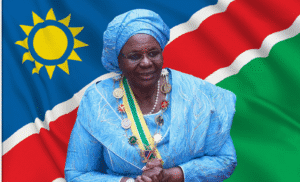In the remote regions of Colombia, Indigenous women are reshaping the narrative around traditional craft, turning weaving from a tool of survival into one of resistance, autonomy, and empowerment. What was once an overlooked aspect of cultural life is now becoming a vehicle for economic independence and political agency, revealing how craftsmanship can serve as a counterweight to systemic exploitation. As highlighted in a recent BBC feature, this shift is being led by communities like the Wayuu, who are challenging the extractive dynamics of global fashion by reclaiming control over their cultural heritage.
Transforming Tradition into Economic Agency
For many Indigenous communities in Colombia, weaving is not just an art form, but a vital expression of identity, spirituality, and community belonging. It is taught early in life and embedded with stories and symbology unique to each group. Until recently, these intricately crafted goods, particularly the now-iconic mochila bags, were primarily bartered locally or sold to intermediaries who profited far more than the artisans themselves. This asymmetry exemplified a broader pattern of economic marginalization, where Indigenous labor was undervalued even as global brands cashed in on its aesthetic appeal.
Now, a new generation of weavers is upending that model. With access to digital tools and growing consumer interest in ethical sourcing, these women are finding direct-to-market pathways that cut out exploitative middlemen. E-commerce platforms, cooperative networks, and fair trade certification have enabled Indigenous artisans to set their own prices and build long-term relationships with buyers who value both the product and its provenance. This shift from informal labor to recognized creative entrepreneurship is fostering economic resilience in areas where formal employment is scarce.
Empowerment Through Feminized Labor
The rise of Indigenous weaving as a force for empowerment also marks a powerful intervention in gender politics. Weaving has traditionally been the domain of women, passed from mother to daughter through generations. As such, the success of these weaving enterprises is not just economic, it’s deeply feminist. Women are asserting authority not only over their craft but over their time, finances, and futures.
This empowerment reverberates across entire communities. Research shows that women who control their income are more likely to invest in education, nutrition, and health for their families. Moreover, by formalizing and elevating their labor, these women are challenging patriarchal structures that have historically devalued both domestic and artistic work. The loom becomes a site of resistance, a place where cultural heritage and economic autonomy converge.
Balancing Commercial Success with Cultural Integrity
Yet with greater visibility comes new risks. As international demand for Indigenous textiles grows, so too does the threat of cultural commodification. Designs may be copied without consent, meanings diluted for trendiness, or production rushed to meet demand, sacrificing the intentionality that defines these works. Some communities have responded by developing ethical guidelines, insisting on respectful collaboration, and exploring intellectual property protections that honor collective ownership rather than individual patents.
Navigating this balance, between preserving authenticity and achieving financial sustainability, is now central to the future of Indigenous weaving in Colombia. It requires not only local leadership, but also consumers willing to engage with products as cultural narratives, not just fashion statements.
A Final Note: A Fabric of Resistance and Renewal
The story unfolding in Colombia is not simply one of artisanal success. It is a broader reckoning with how tradition, identity, and labor intersect in a globalized world. Indigenous women are not waiting for institutions to empower them; they are doing it themselves—one thread at a time. In doing so, they are weaving a vision of justice and dignity that challenges the very systems that once sought to erase them.











